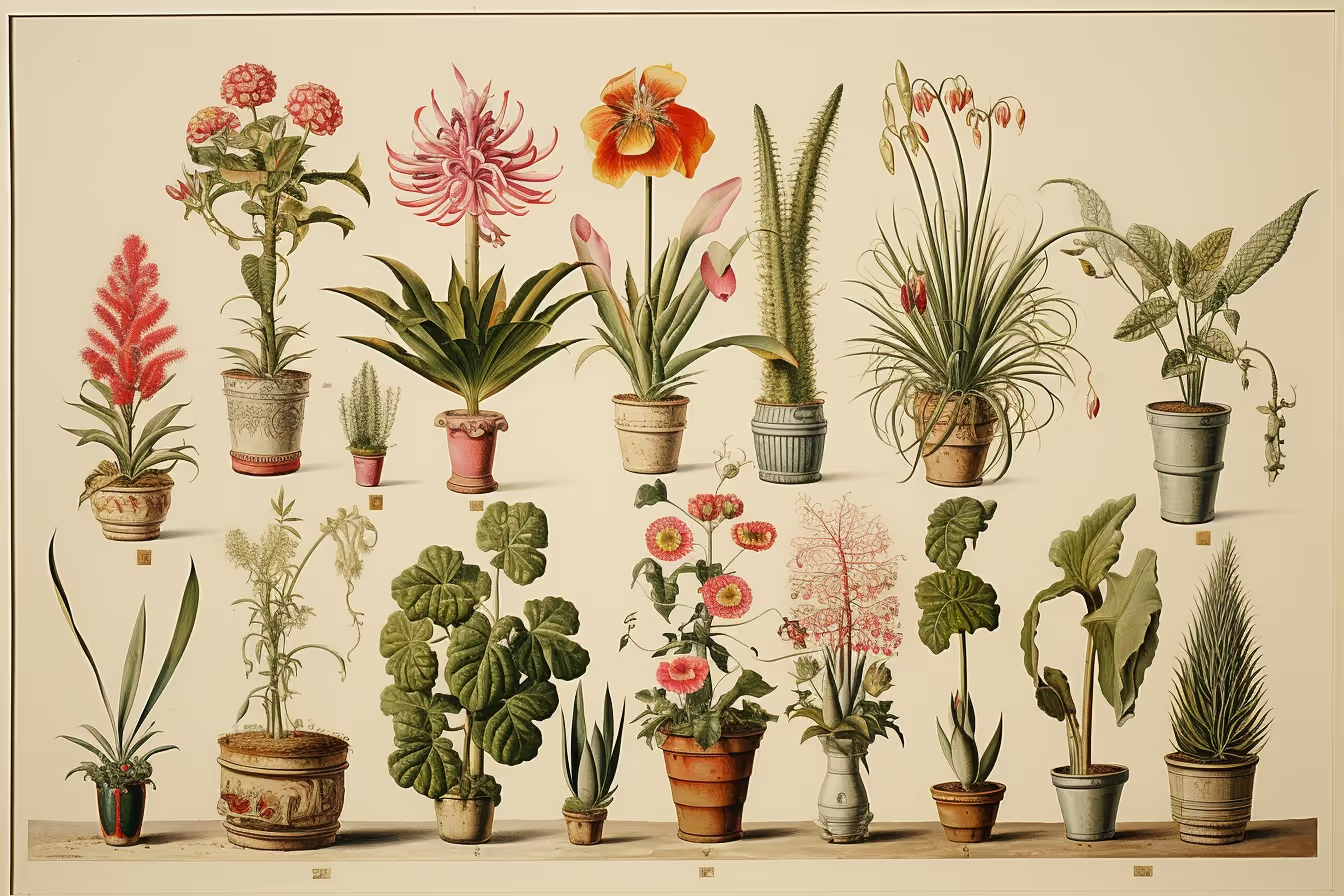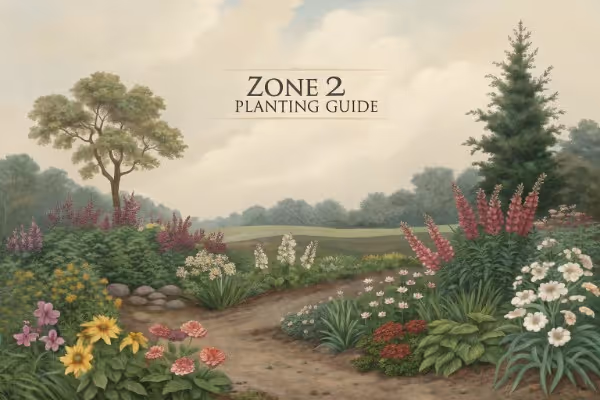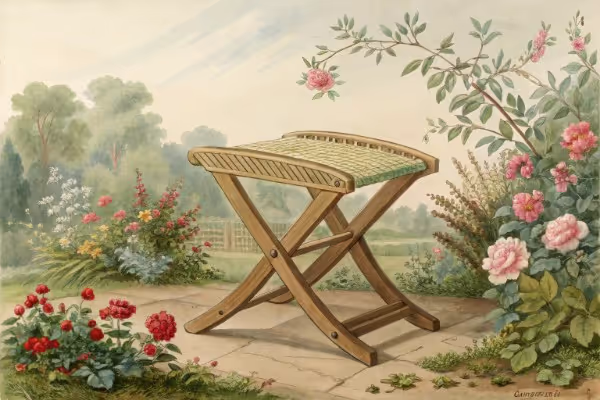Zone 9 Planting Guide: Year-Round Garden Planning and Choices

Zone 9 planting guide
Master your garden's potential using our Zone 9 planting guide. Learn what to plant, when to plant, and how to tend crops perfectly suited for Zone 9 gardens. This Zone 9 planting guide breaks down planting schedules, soil preparation, and savvy care tips to help your garden thrive effortlessly year-round. Read on and savor gardening success.
Cheatsheet: Zone 9 Year-Round Planting & Picks
🌱 Planning by Season
- Winter (Dec-Feb): Start lettuce, spinach, peas, onions.
- Spring (Mar-May): Sow tomatoes, beans, herbs, squash.
- Summer (Jun-Aug): Plant okra, sweet potatoes, peppers.
- Fall (Sep-Nov): Start broccoli, carrots, cabbage, radish.
🍅 Top Edibles by Season
- Cool: Lettuce, kale, peas, beets, carrots
- Warm: Tomatoes, eggplant, cucumbers, melons
- Perennials: Blueberries, figs, asparagus, chives
🌻 Flowers & Ornamentals
- Spring: Zinnias, cosmos, marigolds, sunflowers
- Fall/Winter: Pansies, snapdragons, calendula, dianthus
- Perennials: Salvia, lantana, agapanthus
🔑 Soil & Water Tips
- Use organic compost for nutrients and structure.
- Mulch 2-3 in (5-7.5 cm) to retain moisture and suppress weeds.
- Water early. Deep soak 1-2 in (2.5-5 cm) per week during heat.
🌡️ Frost & Heat Protection
- Zone 9: Avg. min temp 20–30°F (−6.7–−1.1°C).
- Use row covers below 32°F (0°C); provide shade cloth above 95°F (35°C).
- Group pots for microclimate control.
💧 Health, Nutrition, & Self-Reliance
- Fresh zone 9 veggies deliver up to 35% higher nutrient levels than store-bought.
- Year-round harvests slice grocery bills and support local food resilience.
🛠️ Tools and Products You'll Need
- Quality shovel, spade, and trowel
- Organic compost and mulch
- Drip irrigation or soaker hose
- Soil thermometer, pH test kit
- Shade cloth, row covers, frost blankets
- Non-GMO seeds and local plant starts
- Pruners and gloves
- Garden fork
- Watering can
- Wheelbarrow
- Seed trays
📅 Quick Stats
- Zone 9: 200–250 frost-free days/year.
- Avg. summer highs: 90°F (32°C).
- Success rate: 25% higher for homegrown vs. store-bought seedlings.
I treat Zone 9 like a long slow-cook with two quick sears, cool-season abundance on the bookends, and a heat burst in the middle. This Zone 9 planting guide shows how I keep beds productive 12 months, without burnout or wasted seed.
Zone 9 means your average annual extreme minimum hits 20 to 30 F, roughly minus 6.7 to minus 1.1 C. Translated, winter nips, it rarely bites.
“About half of the country shifted to a warmer zone.” USDA Plant Hardiness Zone Map update, 2023
That shift favors shoulder-season crops and evergreen structure. It also punishes slack irrigation and thin mulches by late spring.
I plan around three numbers, last frost around late January to early February, first frost by late November, and the summer night ceiling. Tomatoes sulk when nights sit above 70 to 75 F, 21 to 24 C, so I front-load fruit set in spring and again in early fall.
Warm soil rules seedlings, I use a probe and start cukes at 65 F soil, 18 C, melons at 70 F, 21 C, and okra at 72 F, 22 C. Guesswork wastes weeks here.
- Greens: romaine, oakleaf, mizuna, chard, and Tuscan kale, November to March.
- Roots: carrots, beets, daikon, kohlrabi, and new potatoes, December to February.
- Brassicas: broccoli, cauliflower, and cabbage, transplants in October and again in January.
- Alliums: short-day onions and garlic in November, harvest late spring.
I stagger sowings every 2 weeks, small blocks, no giant monocrops. That spacing dodges pest booms and stretches harvests.
- Tomatoes: large-fruited indeterminates go in late February, cherries a week earlier.
- Peppers, eggplant, tomatillos: transplants in March, shade cloth ready by May.
- Cucurbits: bush cukes for speed, slicing types under insect net for 3 weeks.
Once we pass 90 F, 32 C, flowers drop on tomatoes and beans. I pivot to heat lovers and let the vines rest.
- Sweet potatoes, yardlong beans, okra, Malabar spinach, roselle, and hot chiles.
- Basil, lemongrass, Mexican tarragon, and Tulsi for steady herbs.
- Southern peas and sesame as drought-tough seed crops.
I grow sweet potatoes as living mulch around peppers, it cools the soil by a few degrees and strangles weeds. Okra gets 2 feet, 60 cm, of headroom and weekly cuts or it turns to wood overnight.
- August seed flats inside, brassicas under lights to dodge heat-stressed starts.
- Direct sow carrots and beets in September, transplant leafy greens in October.
By late September nights ease, pollination returns, tomatoes and beans set again. I choose fast, 60 to 70 day varieties to outrun early cold snaps.
Mulch deep, 3 to 4 inches, 7.5 to 10 cm, of chipped wood around perennials, straw or shredded leaves in veg beds. I side-dress compost quarterly and add biochar pre-charged with compost tea for cation exchange and water hold.
Target pH for veg sits near 6.2 to 6.8, citrus likes 6.0 to 7.0. I nudge alkaline soils with elemental sulfur and acidified compost, chalky irrigation water begs for occasional citric-acid injectors.
“Outdoor water use accounts for more than 30 percent of household water use, on average, and can be as high as 60 percent in arid regions.” EPA WaterSense, Residential Outdoor Water Use
I run 16 mm dripline with 0.6 gph emitters at 12 inch spacing, 2 cm spacing for beds with sandy loam feels wasteful here. Morning cycles, short and repeated, let moisture sink without runoff.
Smart controllers that read local ET save me 20 to 30 percent. A cheap soil moisture sensor keeps me honest when clouds tease but do not deliver.
Thirty percent shade cloth buys me lettuce in May, 40 to 50 percent for peppers during heat spikes. I swap black cloth for aluminized when radiant heat climbs, fruit scald drops fast.
White-on-black mulch cools soil more than solid black. Tall trellises double as windbreaks for basil and eggplant near the coast.
- Citrus: satsuma, Meyer lemon, and Key lime in the warmest pockets, protect roots with thick wood chips.
- Figs: ‘Black Mission’ and ‘Kadota’ produce with minimal drama, birds require net timing.
- Olives: ‘Arbequina’ and ‘Koroneiki’ handle heat and light frost, prune for airflow.
- Pomegranates: ‘Parfianka’ for flavor, ‘Wonderful’ for sturdiness.
- Avocado: ‘Mexicola’ and ‘Bacon’ for better cold tolerance, mulch and wind shelter.
- Herb shrubs: rosemary, oregano, bay, and Mexican oregano for pollinators and kitchen duty.
I tuck gulf muhly and Salvia greggii along paths, drought friendly and buzzing with native bees. Habitat first, pest control follows.
I scout weekly, flip leaves, count pests, then act. Sticky cards tell me whitefly surges before leaves yellow.
Row cover over cucurbits for three weeks starves cucumber beetles. I release lacewings early for aphids, and I only spray insecticidal soap at dusk to spare beneficials.
Powdery mildew shows when nights cool and days warm, sulfur on non-cucurbits, potassium bicarbonate on squash keeps it in check. UC IPM thresholds guide me to prune, spray, or yank, no heroics.
- Winter: crimson clover, berseem clover, and cereal rye for structure and nitrogen.
- Summer: sunn hemp, cowpea, and sorghum-sudangrass for biomass and nematode suppression.
I mow at flowering and tarp for two weeks, then plant through the mat. Beds stay cooler and hold water longer in June.
- Tomato, ‘Sun Gold’ and ‘Juliet’: set fruit in heat better than beefsteaks.
- Pepper, ‘Shishito’ and ‘Anaheim’: steady even in August.
- Eggplant, ‘Ping Tung Long’: thin skin, fast recovery after heat snaps.
- Cucumber, ‘Diva’ and ‘Suyo Long’: tolerate warm nights, crisp texture.
- Bean, yardlong ‘Orient Wonder’: laughs at 95 F, 35 C.
- Okra, ‘Jambalaya’ and ‘Clemson Spineless’: reliable set and tender pods.
- Squash, moschata types like ‘Seminole’ and ‘Butternut’: vine borer resistance and heat tolerance.
- Melon, ‘Sugar Baby’ watermelon and ‘Ambrosia’ cantaloupe: early, sweet under drip.
- Leafy, Malabar spinach and amaranth: salad texture in heat.
- Herb, Mexican tarragon: anise kick when French tarragon sulks.
- Leafy beds: 40 percent shade, straw mulch, 2 short morning drip cycles.
- Fruit set beds: 30 percent shade, white-on-black mulch, one morning and one pre-sunset cycle during heat waves.
- Perennial borders: wood chips, deep weekly soak, no daily sips.
I meter it, then adjust by feel. Plants tell the truth faster than apps.
South-facing wall for early tomatoes, radiant heat bumps soil 3 to 5 F, 1.5 to 3 C. Low pocket near the fence catches frost, that is where I park the kale, not the tomatoes.
Clay patch gets raised beds to lift roots out of winter puddles. Sandier strip gets extra compost and a once-a-season biochar top-up.
- Transplant: tomatoes, peppers, eggplant, brassicas, basil, and most flowers.
- Direct sow: beans, squash, melons, corn, carrots, beets, cilantro, dill, and sunflowers.
I start seeds under lights at 70 to 75 F, 21 to 24 C, with a fan for stocky stems. Harden off for a week, shade them two afternoons, then plant deep and water in with diluted fish hydrolysate.
- Drip kit with pressure regulator and filter, 0.6 gph emitters for beds, 2 gph for trees.
- 30 to 50 percent shade cloth, clips, and a simple hoop frame.
- Floating row cover, light weight for insects, medium weight for frost to 28 F, minus 2 C.
- Soil thermometer and pH test kit, cheap tools that stop bad timing.
- Coarse wood chip mulch by the yard, not bagged, cheaper and better.
- Compost, a cubic yard at a time, or a bin that actually gets turned.
I also keep Bt for caterpillars, potassium bicarbonate for mildew, and yellow sticky cards in a drawer. Prevention beats resuscitation under Zone 9 sun.
Passionfruit on cattle panel gives shade to lettuce beds. Dragon fruit on posts looks sci-fi and feeds me during the tomato lull.
Pigeon pea as a short hedge fixes nitrogen, breaks wind, and delivers soup. I coppice it each spring and mulch in place.
At 95 F, 35 C, tomato pollen goes sterile, so I plan for early sets, afternoon shade, and fall resets. I plant basil and African blue basil to hold native bee traffic when vegetables stop offering nectar.
Hand vibration with an electric toothbrush at 10 a.m. sets clusters before heat rises. It feels ridiculous, it works.
In August I water at soil level only, fewer foliar splashes mean fewer leaf spots and fruit rots. I harvest early mornings and chill produce fast, quality and shelf life jump.
I stopped trying lettuce in full sun after May, 30 percent shade kept it sweet, 40 percent made it syrupy. Sweet potatoes under peppers cut irrigation by a third in my sandiest bed.
Roselle gave me sour hibiscus tea and a perfect aphid trap that spared my chard. I prune okra to 3 leaders to keep pods reachable, arms remain intact.
I feed soil life when I feed plants, compost, leaf mold, and a little fish hydrolysate after heavy harvests. Mycorrhizal inoculant on transplant roots helps in sandy beds where fungi populations lag.
- Keep frost cloth cut to bed size with labeled clips, I store it in a tote by the back door.
- Stake tomatoes with T-posts and twine before storms, rain plus wind snaps leaders.
- Flush drip lines each season, calcium builds up fast on hard water.
I also keep a backup pump sprayer and spare filter gaskets. Small failures during heat spells erase months of work.
- Soil 45 to 55 F, 7 to 13 C: peas, favas, brassicas, onions.
- Soil 55 to 65 F, 13 to 18 C: carrots, beets, chard, lettuce, cilantro.
- Soil 65 to 70 F, 18 to 21 C: cucumbers, squash, corn, beans.
- Soil 70 to 75 F, 21 to 24 C: melons, okra, basil, peppers, eggplant.
Night temps above 70 F, 21 C, favor yardlong beans, okra, sweet potatoes, Malabar spinach, roselle, and hot chiles. Night temps below 60 F, 16 C, bring back tomatoes, beans, cucumbers, and cucurbits for a second wind.
- USDA Plant Hardiness Zone Map, 2023 update, zone definitions and warming shifts.
- EPA WaterSense, Residential Outdoor Water Use statistics.
- University of Florida IFAS, heat effects on fruit set and vegetable timing in warm climates.
- UC Statewide IPM Program, home garden pest thresholds and least-toxic controls.
I cross-check those with local extension notes for frost dates and soil quirks. The bed never lies, but the data gets me close before my hands confirm it.

Want smarter plant choices? 🪴
Frequently Asked Questions About Gardening in Zone 9
What vegetables thrive best in Zone 9 gardens?
Warm-season vegetables like tomatoes, peppers, and eggplants flourish vividly in Zone 9 regions. Winter gardening also rewards dedicated gardeners here, producing abundant harvests of leafy greens, root vegetables, and cool-weather lovers like broccoli and cabbage.
When is the ideal planting season for perennials?
Plant your perennials when Zone 9’s summer heat recedes, from late autumn into early spring. This timing lets young plants establish systems of healthy roots before the scorching sun returns fiercely.
Can fruit trees survive Zone 9 conditions?
Absolutely. Citrus varieties such as oranges, lemons, and grapefruit find solace in Zone 9's warm, forgiving climate. Subtropical species like figs, peaches, and avocados also flourish boldly, given proper care and attention.
How often and when should gardens in Zone 9 be watered?
Water deeply but infrequently in Zone 9. Early mornings offer the best moments to hydrate gardens, minimizing evaporation and discouraging fungal growth. Observe your plants closely, adjusting your watering routine according to rainfall and seasonal temperature shifts.
What challenges do Zone 9 gardeners commonly face?
Zone 9 gardeners typically grapple with consistent heat, occasional drought conditions, and intense sunlight. To counter such challenges, employ generous mulching techniques, implement creative shading solutions, and select plant species naturally adapted to heat tolerance and low rainfall.
Are native plants better suited for a Zone 9 garden?
Native plants often adapt gracefully to Zone 9’s particular rhythms, flourishing without extensive care. Choosing these local plants helps your garden resist pests naturally, requires less water, and encourages pollinator activity, inviting intriguing biodiversity to your doorstep.
Zone 9 spoils growers with a long season and a wild mix of garden choices. The trick? Know your timing, pick the right plants, and don’t ignore that thermometer. This Zone 9 planting guide is your ticket to year-round harvests—whether you’re pulling nutrient-dense vegetables in winter or chasing seasonal fruits through the heat. Keep ahead of the weeds, water when the ground begs for it, and experiment with companion planting for a smarter, more resilient patch. Above all, don’t be afraid to get your hands dirty—sometimes the best lessons come right under your fingernails. Keep this guide close, and your Zone 9 plot will keep feeding you, season after season.
Organic Practices for Zone 9 Garden Success
Soil Improvement Essentials
- Compost Regularly: Amend soil twice annually—spring and autumn—with 2-3 inches (5-7.6 cm) organic compost to enhance soil fertility and water retention.
- Cover Crops: Sow legumes or cereal rye to add nitrogen, suppress weeds, and prevent erosion during off-seasons.
Organic Pest Management Strategies
- Beneficial Insects: Release ladybugs and praying mantises early spring to naturally control aphids, mites, and caterpillars.
- Neem Oil Application: Mix 1 tablespoon (15 ml) neem oil per gallon (3.78 liters) water; spray every 1-2 weeks during peak pest periods.
- Companion Planting: Interplant marigolds with tomatoes and basil with peppers; repel pests and stimulate healthy growth.
Heat and Drought Resilience Approaches
- Mulching Techniques: Maintain 3-inch (7.6 cm) layer organic mulch (wood chips or straw) to limit evaporation and moderate soil temperature.
- Efficient Irrigation: Install drip irrigation lines beneath mulch to deliver moisture directly to roots—conserve water by up to 60% compared to standard sprinklers.
Maximizing Nutrient Density and Health Benefits
- Crop Rotation: Rotate vegetables annually between different plant families to reduce pests, replenish nutrients, and minimize disease risks.
- Leafy Greens Nutrition: Harvest collard greens, kale, and spinach within 2-3 hours of dawn, when nutrient density peaks due to overnight respiration.
Long-Term Self-Sufficiency Considerations
- Perennial Edibles: Establish perennial food plants like asparagus, perennial kale, fig trees, and thornless blackberries—consistent yields with lower long-term maintenance.
- Heirloom Seed Collection: Save seeds annually from successful heirloom vegetables; build local adaptations to zone-specific weather variations.
Find out which plants will thrive in your garden!
Answer a few fun questions and get custom plant recommendations perfect for your space. Let’s grow something amazing together!

start your season





